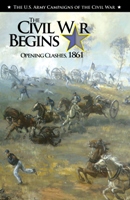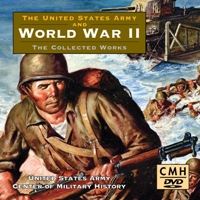Seventy-three years ago this month, the historic attack on Pearl Harbor took place. On the morning of December 7, 1941, the Imperial Japanese Navy launched the surprise military attack of the United States naval base at Pearl Harbor, Hawaii. This landmark event in history led to the United States’ involvement in World War II. Over 350 Japanese fighter planes, bombers, and torpedo planes attacked the base. 2,403 Americans were killed, and another 1,178 were wounded. U.S. Navy battleships were severely damaged, some sunk; cruisers, destroyers, and other ships were extremely damaged or destroyed; and almost 200 U.S. aircraft were destroyed. This pivotal moment changed the course of U.S. history. The next day, on December 8, 1941, the United States declared war on Japan. President Franklin D. Roosevelt proclaimed December 7, 1941, “a date which will live in infamy.”
GPO’s Federal Digital System (FDsys) provides free access to a number of Government documents related to Pearl Harbor:
- Read commemorations and tributes of remembrance in The Congressional Record. Here are just a few examples:
- In the Compilation of Presidential Documents, view the Proclamation of National Pearl Harbor Remembrance Day.
- Numerous Congressional Hearings reference Pearl Harbor and its rich history. Here are some examples:
- Threats to the Homeland, Hearing Before The Committee On Homeland Security and Governmental Affairs, United States Senate
- Electromagnetic Pulse (EMP): Threat to Critical Infrastructure, Hearing Before the Subcommittee on Cybersecurity, Infrastructure Protection, and Security Technologies of the Committee on Homeland Security, House of Representatives
These are just some of the many examples of Federal Government documents that reference the historic Pearl Harbor attack. Explore FDsys for other examples from collections such as: Congressional Bills, Congressional Reports, Public Papers of the Presidents, United States Court Opinions, and more.
Another great resource for documents produced by the Federal Government on Pearl Harbor is GPO’s Catalog of U.S. Government Publications.
View an incredible publication from the Center for Cryptologic History at the National Security Agency called, “Pearl Harbor Revisited: United States Navy Communications Intelligence, 1924 – 1941.”

First Army photo of the bombing of Hawaii, 7 December 1941; the battleship USS Arizona in background is on fire and sinking.
Another interesting read is also from the National Security Agency’s Center for Cryptologic History is called, “West Wind Clear: Cryptology and the Winds Message Controversy: A Documentary History.” This documents the history behind the theory that the “winds message” was received by the United States as a warning that the Japanese were going to attack Pearl Harbor.
Also of interest is a document from the Combat Studies Institute Press, “Staff Ride Handbook for the Attack on Pearl Harbor, 7 December 1941: A Study of Defending America.” The publication allows for study of the battle, not only in context of the Japanese attack, but also in the context of the issues that are relevant to the global war on terror. It is available from GPO’s Catalog of U.S. Government Publications as parts 1 and 2.

Pearl Harbor Attack, 7 December 1941 USS West Virginia (BB-48) afire forward, immediately after the Japanese air attack. USS Tennessee (BB-43) is on the sunken battleship’s opposite side.
Another publication of note is, “7 December 1941: The Air Force Story,” from the Pacific Air Forces Office of History. This was published for the 50th anniversary of the attack and details the Air Forces’ story from that fateful day.
To learn more about visiting Pearl Harbor historic sites, visit:
- http://www.nps.gov/valr/index.htm
- http://www.recreation.gov/tourParkDetail.do?contractCode=NRSO&parkId=72369#
You can also learn more about the attack on Pearl Harbor here:
- http://www.defense.gov/home/features/2011/1211_wwii/
- http://hawaii.gov/hawaiiaviation/world-war-ii/december-7-1941
Shop the GPO online bookstore World War II collection here.
How can I access these publications?
In addition to clicking on the links in the article above to find the publications, you may find these publications from the following:
- Visit a Federal Depository Library: Search for U.S. Government publications in a nearby Federal depository library.
- Librarians: You can find the records for most titles in the Catalog of U.S. Government Publications (CGP).
- Visit a Public Library: Ask your local public librarian about Federal Government books available to check out as well as Federal eBooks that may be available for library patrons to digitally download through the library’s Overdrive subscription.
And to find popular current Federal publications, you may:
- Shop Online Anytime: You can buy eBooks as well as print publications (with FREE Standard Shipping worldwide) from the U.S. Government Online Bookstore website at http://bookstore.gpo.gov
- Order by Phone: You may also Order print editions by calling GPO’s Customer Contact Center Monday through Friday, 8 am to 5:30 pm Eastern (except US Federal holidays). From US and Canada, call toll-free 1.866.512.1800. DC or International customers call +1.202.512.1800.
- Shop our Retail Store: Buy a copy of any print editions at GPO’s retail bookstore at 710 North Capitol Street NW, Washington, DC 20401, open Monday–Friday, 9 a.m. to 4 p.m., except Federal holidays, Call (202) 512-0132 for information or to arrange in-store pick-up.
About the author: Our guest blogger is Kelly Seifert, Lead Planning Specialist for GPO’s Library Services & Content Management Division that supports the Federal Depository Library Program.



 Posted by Trudy Hawkins
Posted by Trudy Hawkins 
















